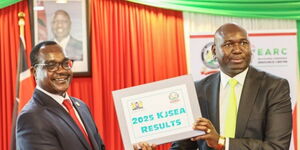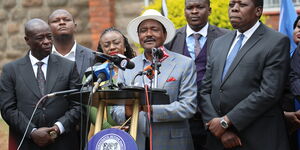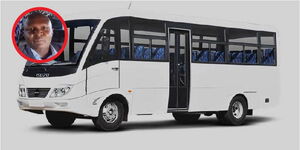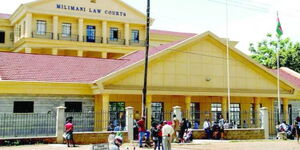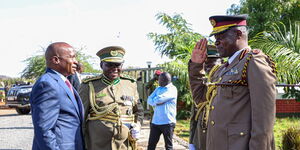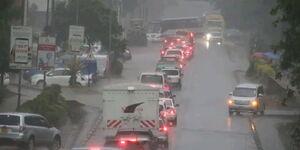President Uhuru Kenyatta has signed an Executive order that will, for the first time in Kenya's history, see a comprehensive solution provided in the transport sector.
On Thursday, the Head of State established the Nairobi Metropolitan Area Transport Authority (NAMATA), a body geared towards addressing challenges in the transport sector.
NAMATA, which was created under the provisions of the State Corporations Act, will oversee implementation of the Mass Rapid Transit System (MRTS) project covering Kiambu, Kajiado, Machakos and Murang’a counties.
"NAMATA is a bold and visionary policy intervention that, for the first time in our nation’s history, provides a comprehensive and dynamic platform for addressing the decades-old challenges in the transport sector that have bedevilled the Metropolitan Area," a statement by State House Spokesperson Manoah Esipisu read in part.
The Authority will formulate a sustainable integrated public transport strategy that links the Metropolitan areas by both bus rapid transit and commuter rail.
During the signing, President Kenyatta said: "These elements are part of the Administration’s wider plan of improving Kenya’s transport infrastructure as a spur for social and economic development."
Mr Kenyatta authorised the establishment of NAMATA following a Memorandum of Understanding (MoU) signed in August 2013 between the National Government, through the Ministry of Transport, on one part; and the county governments of Nairobi City, Kiambu, Murang’a, Machakos and Kajiado on the other part.
160 Kilometres of roads and railway lines linking the five satellite towns will be constructed in the MTRS project spearheaded by NAMATA.
According to the plans set to significantly reduce traffic snarl-ups, a commuter railway line will be built along Outer Ring, Jogoo, Mombasa, Limuru, Lang’ata, Ngong roads and Waiyaki Way corridors.
The project will also involve the construction of a rapid bus transit system to be used exclusively by special buses, which will charge lower rates than other passenger service vehicles.
At the same time, additional special bus lanes will be built from the Jomo Kenyatta International Airport road junction to Machakos and another one to Kikuyu through Waiyaki Way. Two more bus routes will terminate at Bomas and Ruaka towns through Lang’ata and Limuru roads respectively.
There will also be an eight-kilometre tram service connecting the Nairobi Railway Station and Dagoretti Corner and an additional rail service connecting Nairobi to Ruai, Kasarani, Westlands and Kayole.
The project will further see long-distance public vehicles locked out of the city centre with only a few matatus allowed.
Read Also: New Strategy to End Nairobi Traffic Jam Announced


